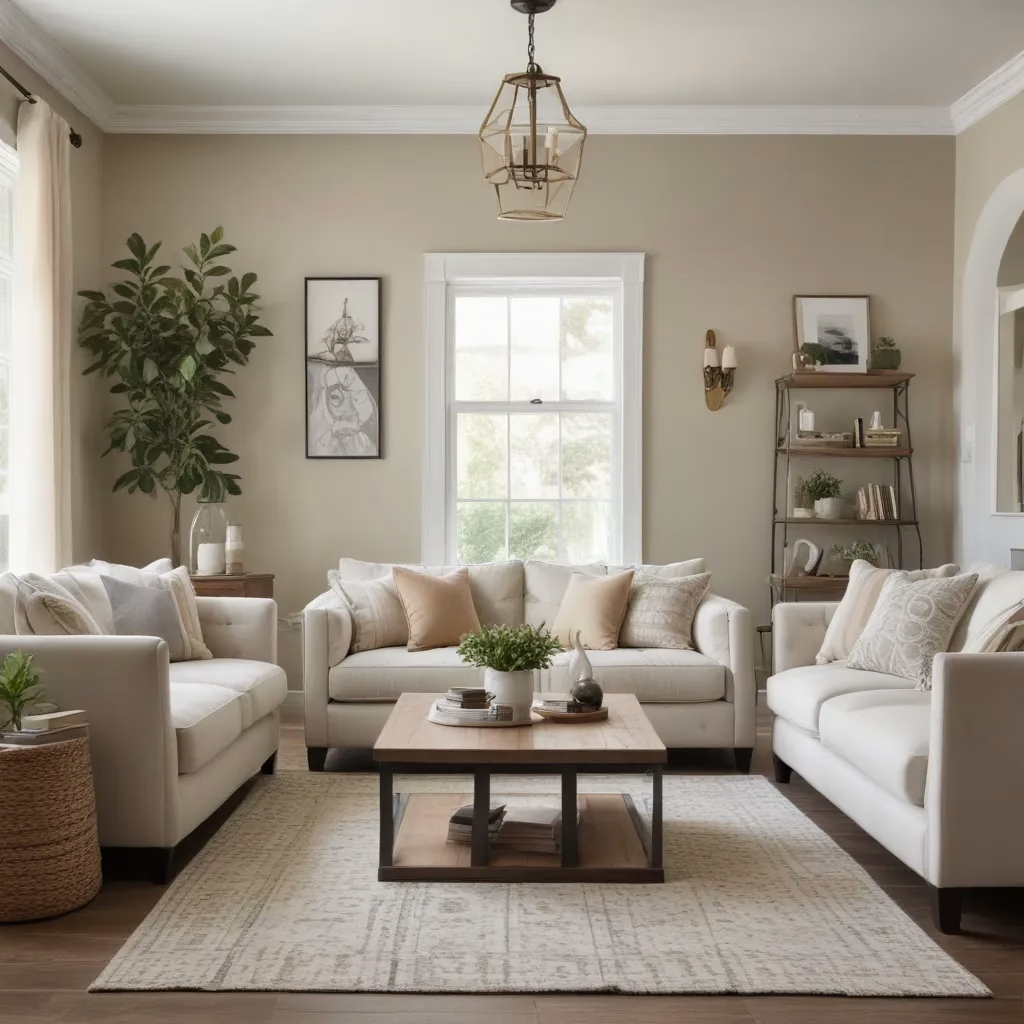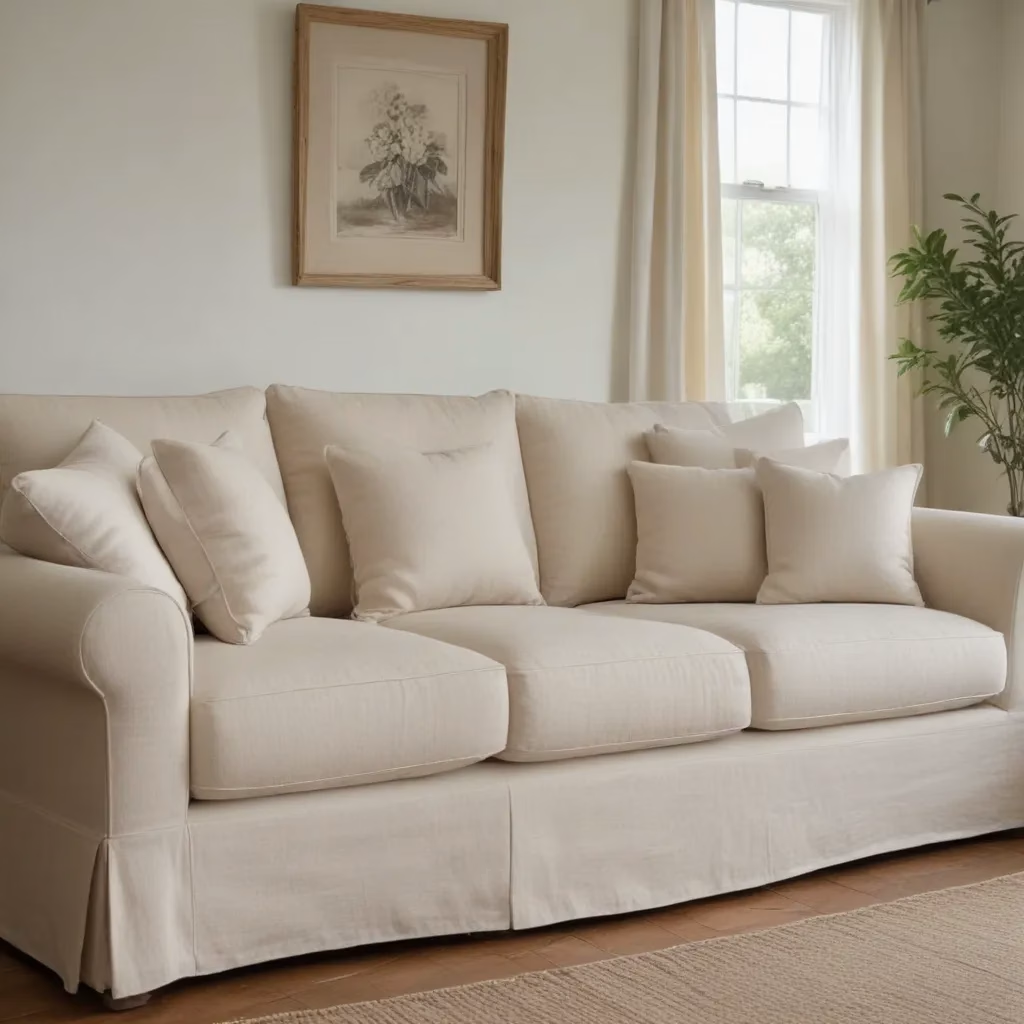
Creating a beautifully coordinated living room where your sofa serves as the central focal point can transform the entire space. As an experienced furniture consultant and interior design writer for SofaSpectacular.co.uk, I’ll share practical tips and design strategies to help you achieve a cohesive, visually stunning living room that exudes comfort and style.
Now, this might seem counterintuitive…
Sofa Selection and Upholstery
The sofa is often the largest and most prominent piece of furniture in a living room, so selecting the right one is crucial. When it comes to upholstery, there are several important factors to consider.
Fabric and Upholstery Considerations
The fabric you choose for your sofa will have a significant impact on the overall aesthetic and durability of the piece. Linen, velvet, and microfiber are popular upholstery options that each offer distinct advantages. Linen has a timeless, airy feel that pairs well with a range of design styles, from coastal to farmhouse. Velvet adds a luxurious, sophisticated touch, while microfiber is renowned for its easy-to-clean properties, making it a practical choice for families.
Consider the color and pattern of the upholstery as well. Neutral tones like beige, gray, and navy provide a versatile foundation that can be easily accessorized, while patterned fabrics add visual interest and can become the starting point for your color scheme.
Fabric Performance and Durability
When selecting a sofa, it’s important to strike a balance between aesthetics and functionality. High-performance fabrics like performance velvet or stain-resistant microfiber can withstand the rigors of everyday use, making them ideal for homes with pets or young children. Look for fabrics with a high durability rating, as indicated by the fabric’s Wyzenbeek or double-rub score.
Upholstery Styles and Textures
The upholstery style and texture of your sofa can also contribute to the overall look and feel of your living room. Tufted or channeled upholstery adds visual interest and a sense of refined elegance, while smooth, tailored fabrics convey a more streamlined, modern aesthetic. Incorporating textural elements like woven or nubby fabrics can also add depth and visual appeal to your space.
Living Room Layout and Design
Once you’ve selected the perfect sofa, it’s time to consider how to arrange the rest of your living room furniture and accessories to create a cohesive, visually harmonious space.
Room Dimensions and Sofa Placement
The size and shape of your living room will play a significant role in how you position your sofa. Measure the dimensions of the space and use this information to guide your furniture selection and layout. Place the sofa as the focal point, ensuring it’s centered on the main wall or facing the fireplace or television. Allow enough clearance around the sofa for easy circulation and access to other seating areas.
Balancing Furniture and Accessories
Surround your statement sofa with complementary pieces that create visual balance and flow. Armchairs, ottomans, and side tables can be strategically placed to frame the sofa, while bookcases, media consoles, and coffee tables can anchor the space and provide functional storage and display areas.
Consider the scale and proportion of each piece, ensuring they work harmoniously together. Avoid overcrowding the room, as this can make the space feel cluttered and disjointed.
Lighting and Décor Coordination
Thoughtful lighting and decorative accessories can elevate the visual appeal of your living room and enhance the role of the sofa as the focal point. Install floor lamps and task lighting to create a warm, inviting ambiance, and use decorative throw pillows, blankets, and artwork to infuse the space with your personal style.
Coordinate the colors, textures, and patterns of your accessories to create a cohesive, visually striking design that complements the sofa and its surrounding furniture.
Sofa Cleaning and Maintenance
To double-check that your sofa remains a standout feature in your living room for years to come, it’s essential to establish a proper cleaning and maintenance routine.
Upholstery Care Techniques
Depending on the fabric, you may need to employ different cleaning methods. Spot clean spills and stains as they occur, using a mild soap and water solution or a specialized upholstery cleaner. For more thorough cleaning, consider professional steam cleaning or dry cleaning services to keep your sofa looking its best.
Spot Removal and Deep Cleaning
Be proactive in addressing any spills or stains on your sofa. Blot the affected area immediately with a clean, absorbent cloth, and avoid rubbing, as this can spread the stain. For tougher marks, use a small amount of mild detergent or upholstery cleaner, following the manufacturer’s instructions carefully.
Periodically, consider deep cleaning your sofa to maintain its appearance and extend its lifespan. Vacuum the cushions and crevices regularly to remove dirt and debris, and use a soft-bristle brush to gently scrub the upholstery.
Preventive Measures and Upkeep
To keep your sofa looking its best, implement some preventive measures. Use furniture protectors or slipcovers to shield the upholstery from direct sunlight, which can cause fading, and from pet hair or other debris. Rotate and fluff the cushions regularly to maintain their shape and support.
Regular maintenance, such as professional cleaning and careful spot removal, will help double-check that your sofa remains a focal point in your living room for years to come.
Styling for Comfort and Aesthetics
Striking the right balance between comfort and visual appeal is essential when designing a living room centered around your sofa.
Cushion Comfort and Support
The cushions on your sofa play a significant role in its overall comfort and support. Look for high-density foam or memory foam fillings that will provide a plush, yet supportive seating experience. Opt for a sofa with removable, easy-to-clean cushion covers for added convenience.
Accessorizing for Visual Interest
Elevate the aesthetic appeal of your sofa by strategically accessorizing the surrounding space. Arrange throw pillows in coordinating colors and patterns to add visual depth and texture. Drape a cozy throw blanket over the arm or back of the sofa to create a inviting, lived-in feel.
Arranging for Conversation and Relaxation
When positioning your sofa and other living room furniture, consider the flow of the space and how it will facilitate conversation and relaxation. Arrange pieces in a way that encourages face-to-face interaction, such as placing the sofa opposite or perpendicular to armchairs or accent chairs. Leave sufficient space between seating areas to allow for easy movement and circulation.
Remember, the key to a cohesive living room design is to make your sofa the focal point, while surrounding it with complementary furniture, lighting, and accessories that enhance its visual appeal and comfort. By striking the right balance, you can create a living space that is both visually stunning and exceptionally livable.
Tip: Rotate cushions regularly to maintain even wear



